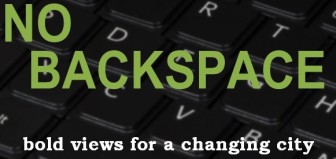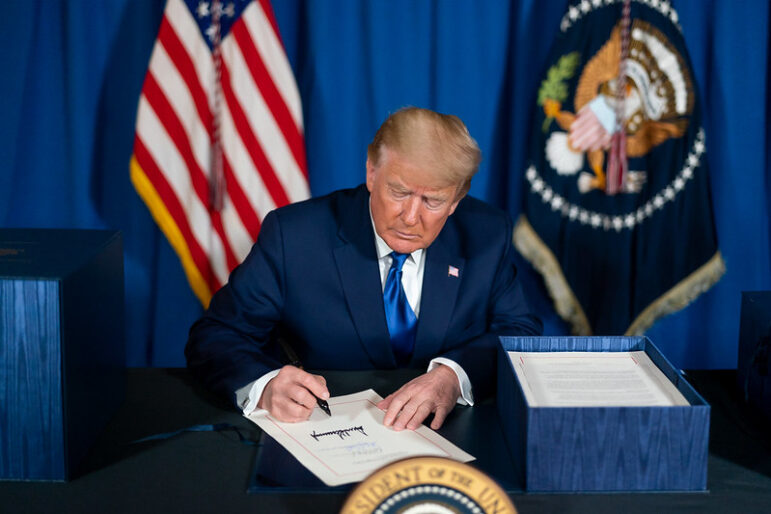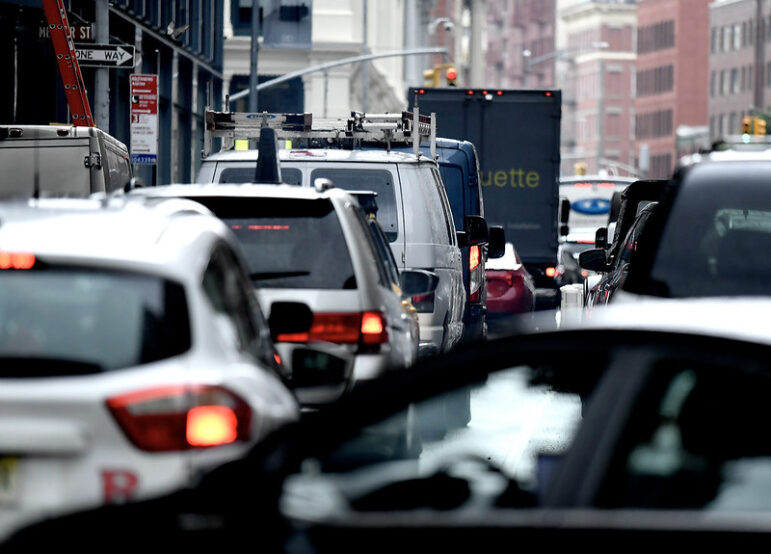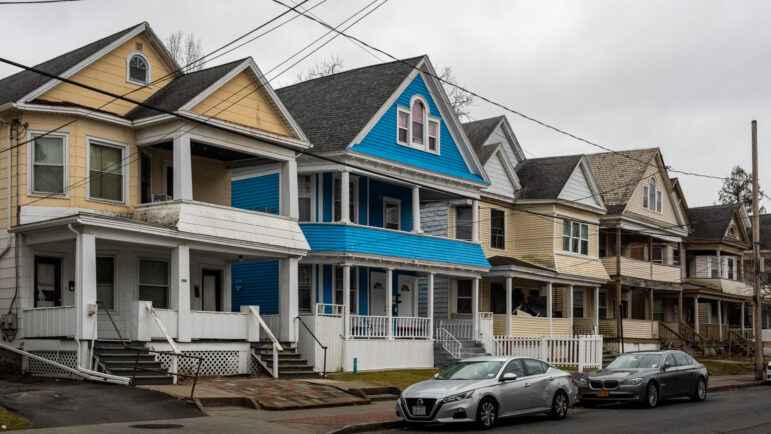
CIA
Now, private investors are pouring into Uber drawn by visions of profiting from a taxi-company without the pesky costs of operating a taxi-company, like licensing, or workers, or cars.
It seems like Uber’s been in the news every day recently – driver protests and union drives, investors, regulations, even a killer picking up fares. Uber’s carnival barkers tout the newness of hailing cars through an app as their free pass to avoid following the rules that protect workers and consumers. To cut through the noise, I called Bhairavi Desai, Executive Director of the Taxi Workers Alliance who has been leading groundbreaking organizing of for-hire-vehicle drivers for nearly twenty years. As we talked, one thing became very clear: no matter how loudly Uber insists that a new app is the same thing as a new way of working, it’s not.
Within minutes we were in the era of the Chevy Caprice, talking about more than thirty years of shifting modes and forms of New York City’s cab industry – yellow cars, black cars, and ten years of negotiations over green cabs – and of the parallel developments in driver organizing and regulation that I’ll talk about in my next column. I learned about how the division of street-hail cabs from dispatched cars in the 1980s led to a move from taxi drivers working for companies as commissioned employee to taxi drivers working as independent contractors driving leased cars.
Uber makes all the rules, controls dispatch, and sets the rates and commission structure. Desai said, “Uber is closer to a traditional employer than we’ve seen in years…The introduction of the CB radio or the Uber app leaves the fundamental economic relationship unchanged. An employer is an employer. Only through propaganda and political maneuvering can they can make labor law invisible.”

No Backspace is City Limits' new blog featuring a recurring cast of opinion writers passionate about New York people, policies and politics. Click here to read more..
Uber’s sleight of hand is designed to make the driver as worker disappear, along with their responsibilities to those workers. It’s built into the consumer experience: the passenger never even has to look up from their screen or say a word to the person driving the car to arrive at their destination, and Desai noted Uber’s lack of a tipping option further renders drivers invisible. And it’s central to Uber’s PR: while they’ve mostly had to back away from the farcical language of “sharing,” Uber is insistent that not only aren’t drivers employees, but that driving for Uber is something that’s extra or on-the-side and Uber’s just helping out by letting drivers earn some spare cash.
This language is familiar to anyone who’s listened to McDonald’s defend poverty wages because its jobs are “extra” for high-school students. Work is work. There is no extra. Uber is relying on the great failure of our economy: workers’ inability to find good jobs at living wages.
Uber worsens the problem by “systematically de-professionalizing a career that has supported drivers and their families for decades,” said Desai. “Ubernomics is fundamentally about part-timing a full time profession.” This is also a not-so-new way to increase profits.
There is something new in the Uber model though, and it’s dangerous. Desai told me that this is the first time Wall Street’s had the chance to make money on the NYC taxi industry.
The NYC for-hire-vehicle industry wasn’t designed for short-term profit-taking and turnover – it hasn’t been easy to get in and out of. Uber’s billionaire CEO has jumped at the chance to paint the company as champion against the medallion system. “There’s no doubt that there is much to fight about in the medallion system. But [owners] remain small, often family players in an insular industry that even arranges its financing privately,” said Desai. “For decades, the medallion market was stronger than real estate, but Wall Street didn’t have access to that wealth.”
Now, private investors are pouring into Uber drawn by visions of profiting from a taxi-company without the pesky costs of operating a taxi-company – like licensing, or workers, or cars. They’ve bet more than $60 billion on future slices of the still-private company despite a lack of transparency from Uber.
The vulture capital toolkit is in play – deregulation, cost-shifting, and flooding markets to monopolize. Big fish undercutting to drive out competition and achieve monopolies isn’t new. When Wal-Mart decides to slash prices to win market share, it eats the short-term loss for long-term gain. But Uber already makes its money by making drivers put in all the capital and expenses to get the work of picking up passengers done. So they’re one-upping even Wal-Mart on the race-to-the-bottom as drivers bear the costs of price cuts.
Even before Uber eventually has to pay up or go public to satisfy its investors, the challenges of chasing Wall Street’s imperatives are bubbling up. Uber’s seemingly endless push to get more drivers onto the platform without regard to cannibalizing work for existing drivers is already running up against what Desai called a “revolving door with a labor pool that is drying up” and enormous turnover. Add in Uber’s need to enter new markets (both around the world and by competing with courier and delivery), and you’ve got continued conflict, regulatory battles, and more blocked entries.
So what will happen if Uber keeps taking a more-or-less stable industry and slicing and dicing and monetizing and monopolizing and sucking out the profits for Wall Street gain? We’ve all seen the consequences of staking industries on games of chance, and we know who pays for it.
Next time we’ll talk about the growing reaction – from workers, regulators, lawyers. As Bhairavi Desai told me, “This is a moment of tremendous opportunity and transition. We don’t know which companies will go bust and which will survive. But either way drivers are on a collision course unless we organize.”










One thought on “No Backspace: The Only Thing New About Uber is Who’s Making Money Off It”
I remain dumbfounded as to why the simple logic that you have laid out seems to be so difficult for so many to comprehend. I have my own little hashtag of worldsmostodiouscompany which you might want to look at.
It is amazing also, that a company that has burnt through nearly $10bn with no glimmer of turning a profit continues to attract funds.The true uber disruption will be when the company falls over sometime in the reasonably near future